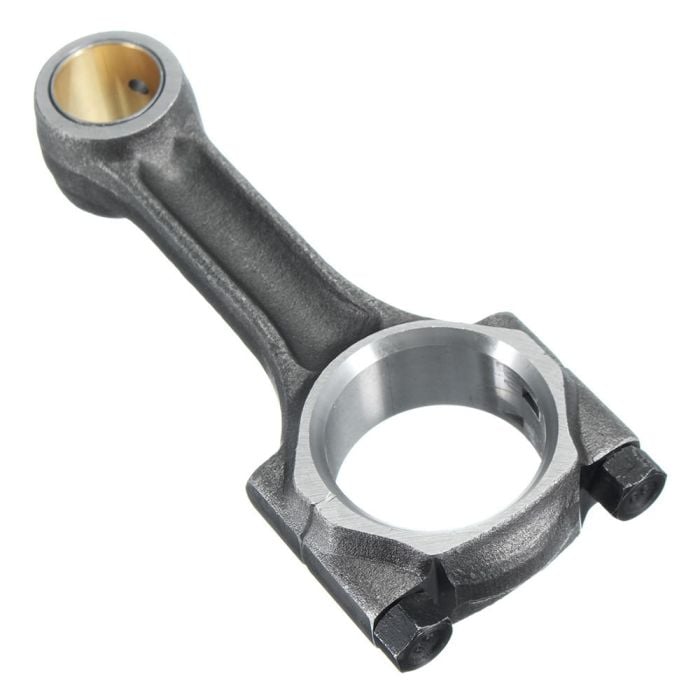Prevent operational issues with a well-tuned clp engine.
Prevent operational issues with a well-tuned clp engine.
Blog Article
Exactly How a Clp Engine Can Enhance Efficiency in Different Industries
The arrival of CLP engines marks a considerable shift in functional performance across different fields, driven by their ability to optimize fuel usage and decrease downtime. As companies increasingly prioritize sustainability together with effectiveness, the duty of CLP engines comes to be also more vital.
Summary of CLP Engines
CLP engines, or Constant Liquid Propellant engines, represent a substantial innovation in propulsion modern technology, specifically for area applications. These engines utilize a continuous feed system that permits the sustained expulsion of propellant, causing enhanced efficiency and performance compared to conventional solid or hybrid propulsion systems. By keeping a continuous flow of fluid propellant, CLP engines can accomplish much more precise drive control, which is vital for navigating spacecraft in various mission circumstances.
The style of CLP engines integrates innovative materials and cutting-edge gas management systems. clp engine. This causes decreased weight and raised dependability, important variables for long-duration area missions. The continual operation decreases the risk of burning instability, a typical obstacle in traditional rocket engines.

Benefits in Production
The production of Constant Liquid Propellant (CLP) engines provides a number of significant advantages that improve both effectiveness and cost-effectiveness. Among the primary benefits is the structured manufacturing procedure, which lowers the intricacy related to typical propulsion systems. By making use of fluid propellant, makers can achieve better accuracy in engine performance, causing enhanced energy output and lowered waste.
In addition, CLP engines promote a higher level of modularity, permitting for less complicated combination into various production lines. This versatility can dramatically decrease preparations and enhance overall functional versatility. Using CLP technology additionally tends to lessen the requirement for comprehensive upkeep because of less moving components, which equates into minimized downtime and operational prices.

Applications in Logistics
Leveraging Continuous Liquid Propellant (CLP) engines in logistics offers significant advantages in operational performance and integrity. These engines provide a robust solution for various transportation demands, making it possible for the smooth activity of products throughout vast ranges. The inherent layout of CLP engines permits consistent power output, which translates right into smoother and extra foreseeable transport routines.
One of check these guys out the key applications of CLP engines in logistics is in sturdy products transport, where they can drive both ground and aerial vehicles. Their capability to maintain high efficiency under varying load problems ensures that distribution timelines are fulfilled, consequently improving customer complete satisfaction. Furthermore, CLP engines can be integrated right into automated logistics systems, promoting real-time tracking and optimizing course preparation.
Furthermore, the longevity of CLP engines lowers maintenance downtime, allowing logistics companies to optimize their operational capabilities. This is specifically helpful in warehousing operations, where efficiency in taking care of and delivering products is crucial. As logistics continues to develop, the assimilation of CLP engines stands for a forward-thinking technique that not just enhances performance but additionally supports the sector's growing needs for dependability and rate.
Effect On Power Effectiveness
Just How do Constant Fluid Propellant (CLP) engines enhance power efficiency in transportation? CLP engines make use of a constant circulation of liquid gas, optimizing combustion procedures check my blog and maintaining a steady drive outcome. This design lessens energy losses related to conventional burning engines, where fuel shipment can differ and lead to inadequacies.
The constant procedure of CLP engines permits a much more efficient thermal cycle, leading to greater specific impulse contrasted to standard engines. clp engine. This translates to minimized gas usage for the very same quantity of work done, significantly reducing functional costs across different transport industries, consisting of aeronautics and maritime industries
In addition, the ability of CLP engines to keep optimum performance under varying load conditions minimizes the demand for constant velocity and slowdown, better enhancing fuel efficiency. Improved energy efficiency not only contributes to cost savings however additionally causes reduce greenhouse gas exhausts, straightening with international sustainability objectives.
Future Trends and Innovations
Arising advancements in Continual Fluid Propellant (CLP) engine modern technology promise to transform the landscape of transportation performance and sustainability. As sectors pivot towards greener options, CLP engines stand at the leading edge, integrating ingenious materials and design approaches that enhance performance while reducing ecological impact.
Among one of the most encouraging patterns is the adoption of hybrid systems that combine CLP engines with sustainable energy resources. This synergy can optimize gas usage and minimize discharges, straightening with worldwide sustainability goals. Furthermore, developments in computational liquid characteristics (CFD) are assisting in the style of more aerodynamically efficient engines, resulting in decreased drag and improved gas efficiency.
Moreover, the growth of smart monitoring systems is set to enhance operational performances. These systems take advantage of data analytics and IoT innovation to optimize engine efficiency in real-time, ensuring that the engines operate within their most reliable specifications.
As study continues to explore alternate propellant formulations-- such as biofuels and synthetic gas-- the future visit of CLP engines looks promising. By taking advantage of these innovations, markets can not just improve their effectiveness yet also contribute dramatically to a cleaner, more sustainable future in transport.
Conclusion
In final thought, CLP engines stand for a significant improvement in performance across multiple markets. Their capacity to enhance fuel usage and lower operational costs, integrated with a constant feed system, boosts power output and operational reliability. The assimilation of sophisticated materials and less relocating components decreases upkeep needs, while alignment with sustainability goals positions CLP engines as an essential modern technology for the future. Proceeded innovation in this area assures further improvements in efficiency and environmental performance.
Report this page